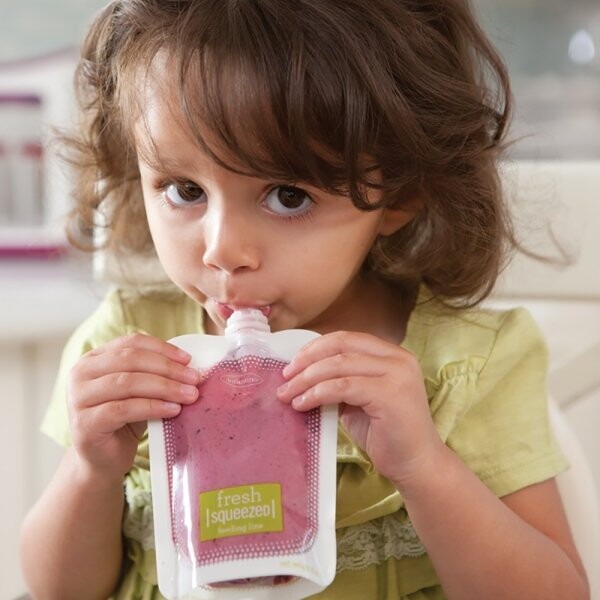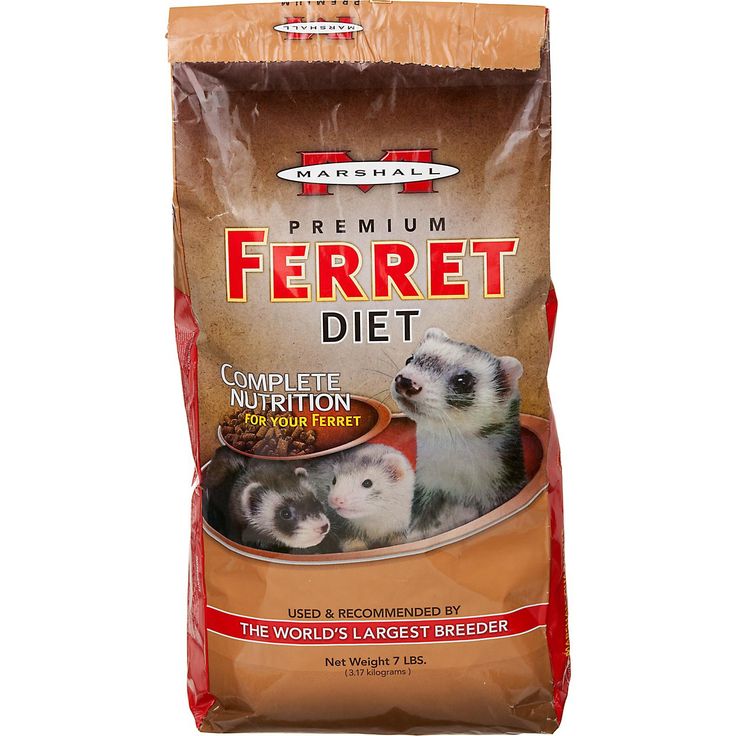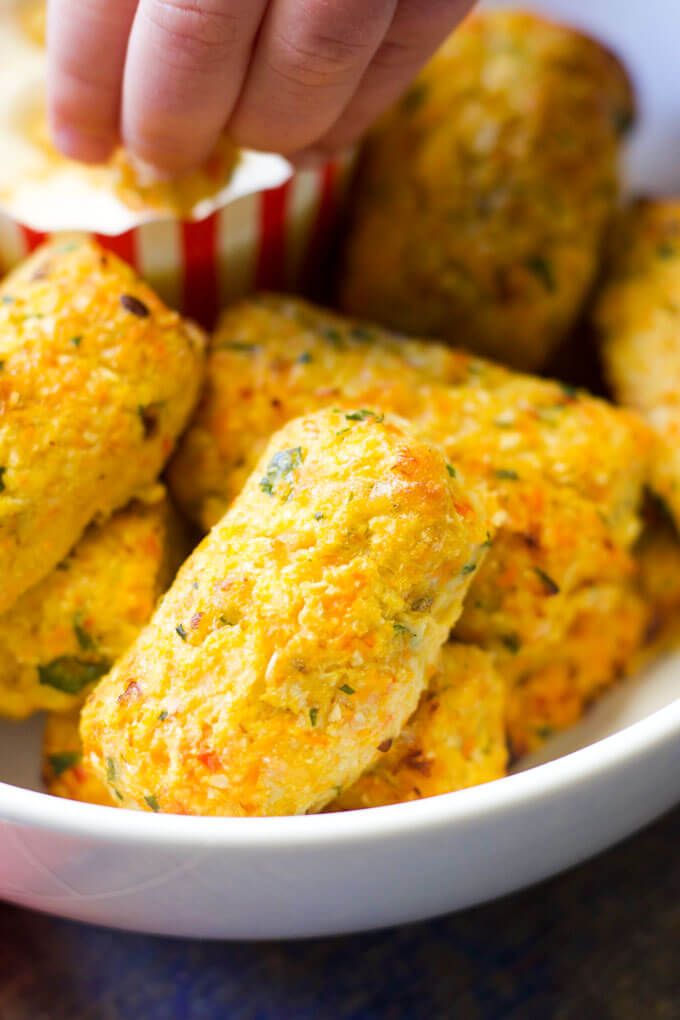Healthy first foods for your baby
Dos and Don'ts for Baby's First Foods
Wavebreak Media/Thinkstock
Breastfeeding has been shown to improve infant, child and maternal health outcomes and help control healthcare costs, but how long should breastfeeding last and when should parents introduce solid foods?
The Dietary Guidelines for Americans recommend exclusive breastfeeding, meaning the infant receives only breast milk, during the first six months of life for optimal nutrition and health benefits.
Once solid foods are introduced, health professionals recommend continuing breastfeeding through 12 months of age and, after that, as desired by mother and baby. Introducing your baby to solid foods is an exciting milestone. When you start introducing children to the world of solid foods, you are helping them shape their relationship with food and establish a healthy eating style. The timing for introducing solid foods will depend on the infant, but it is not recommended before the age of four months or after the age of six months.
Not sure how to get your baby started on solid foods? Consider these helpful tips.
Is Your Baby Ready to Transition?
Each child's readiness for solid food depends on their own rate of development. Signs a baby may be ready to start solid foods include sitting up with minimal support, demonstrating good head control, bringing objects to the mouth or grasping at small objects. Check with your pediatrician before starting solid foods.
Getting Started With Solids
Solid foods may be introduced in any order. However, puréed meats, poultry, beans and iron-fortified cereals are recommended as first foods, especially if your baby has been primarily breastfed, since they provide key nutrients. Only one new single-ingredient food should be introduced at a time.
Softer textures are very important when first introducing foods. Infants usually start with pureed or mashed foods around six months. As infants develop chewing and motor skills, they are able to handle items like soft pieces of fruit and finger foods.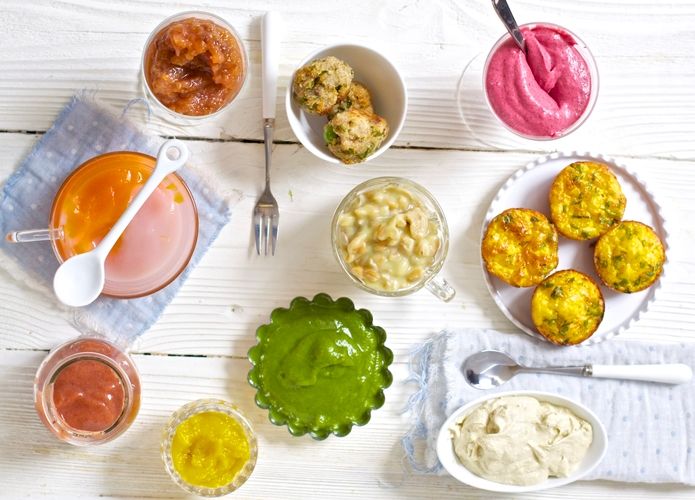 As the child ages, a variety of healthful foods is encouraged.
As the child ages, a variety of healthful foods is encouraged.
Weaning From Breastfeeding
When deciding if you should wean your baby to a bottle or a cup, consider their developmental readiness. Between 7 and 8 months, most infants will drink small amounts of liquid from a cup or a glass when someone else holds it. Older babies and toddlers often have the coordination to drink fluids from a cup by themselves.
If your baby is under 12 months of age and you are not continuing to breastfeed, wean from breast milk to iron-fortified infant formula. If your baby is 12 months or older, whole cow’s milk is appropriate.
Food Safety Do’s and Don’ts
Food safety concerns for infants and toddlers include food allergies, choking and risks for foodborne illness. Keep the following safety tips in mind:
Do talk with your pediatrician about the risk of food allergies. Introducing one new food at a time, every several days, allows time to monitor for allergic reactions. Current evidence does not indicate needing to wait beyond 4 to 6 months before introducing potential allergy-causing foods such as eggs, dairy, soy, peanuts and fish. In fact, introducing peanut-containing foods as early as 4 to 6 months of age may help prevent a peanut allergy. The Dietary Guidelines for Americans recommends introducing potentially allergenic foods when other complementary foods are introduced to an infant’s diet. Parents with concerns about food allergies should discuss how to include these foods with their pediatrician.
Current evidence does not indicate needing to wait beyond 4 to 6 months before introducing potential allergy-causing foods such as eggs, dairy, soy, peanuts and fish. In fact, introducing peanut-containing foods as early as 4 to 6 months of age may help prevent a peanut allergy. The Dietary Guidelines for Americans recommends introducing potentially allergenic foods when other complementary foods are introduced to an infant’s diet. Parents with concerns about food allergies should discuss how to include these foods with their pediatrician.
Don’t feed your baby solid foods from a bottle. It can be a choking hazard and despite a popular misconception, putting cereal in a baby's bottle won't help with sleeping through the night. Other foods that are considered to be choking hazards are listed below.
Do supervise your child while eating. Infants should be able to sit upright and face forward when you first introduce solid foods. This makes swallowing easier and choking less likely.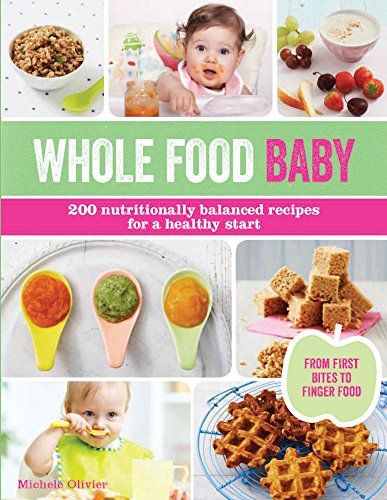
Don’t feed directly from the jar of food but instead spoon some food into a separate dish first. Feeding directly from the jar may introduce bacteria from your baby's mouth to the spoon and back into the food, creating a food safety issue.
Don’t feed honey to children under 12 months of age due to the risk of foodborne illness.
Examples of appropriate solid foods listed by age:
6 months:
- Well-cooked and pureed meat, poultry or beans
- Ground, cooked, single-grain cereal or infant cereal with breast milk or formula
- Cooked and pureed vegetables
- Mashed banana or avocado
9 months:
- Well-cooked, minced or finely chopped meat, poultry or beans
- A variety of cooked vegetables cut into small, ½ inch pieces, such as squash and green beans
- Sliced and quartered bananas or small pieces of other soft fruits
12 months:
- Soft, shredded meat, poultry or fish
- Small pieces of cooked vegetables
- Small pieces of soft, easy to chew fruits
- Mixed food dishes the family is eating in appropriately sized pieces
Not recommended for those under 4 years of age due to the risk of choking:
- Popcorn and whole kernel corn
- Nuts and seeds
- Large chunks of meat, poultry and cheese
- Candy, gum drops and jelly beans
- Hard, raw fruits or vegetables such as apples, celery and carrots
- Whole grapes and cherry tomatoes, unless cut into quarters
- Hot dogs, unless cut into strips and age appropriate, bite-size pieces
- Sticky foods, such as peanut butter, which can get stuck in the back of the mouth – peanut butter is okay if spread thinly on bread
For toddlers and preschoolers, chop grapes, meat, poultry, hot dogs and raw vegetables and fruits into small pieces (about ½ inch or smaller).
Nurturing Healthy Relationships with Food
Establishing a positive feeding relationship during infancy can have lifetime benefits. Keep in mind that children are responsible for how much and whether they eat so always wait for your baby to pay attention to each spoonful before you feed them. Don't be afraid to let your baby touch the food in the dish and on the spoon. You wouldn't want to eat something if you didn't know anything about it, would you? In addition, know the cues that your baby is done eating. A common cue babies are full is head turning.
Whatever happens, don't get discouraged and enjoy the experience. With a little patience and creativity, you can make your baby's first solid food eating experience fun for everyone involved!
Best First Foods for Baby (purees & BLW)
These 10 Best First Foods for Baby are perfect either as a baby food puree or as finger foods for baby-led weaning. Full of essential nutrients for a growing baby, these irresistibly delicious recipes are great for babies 6+ months of age.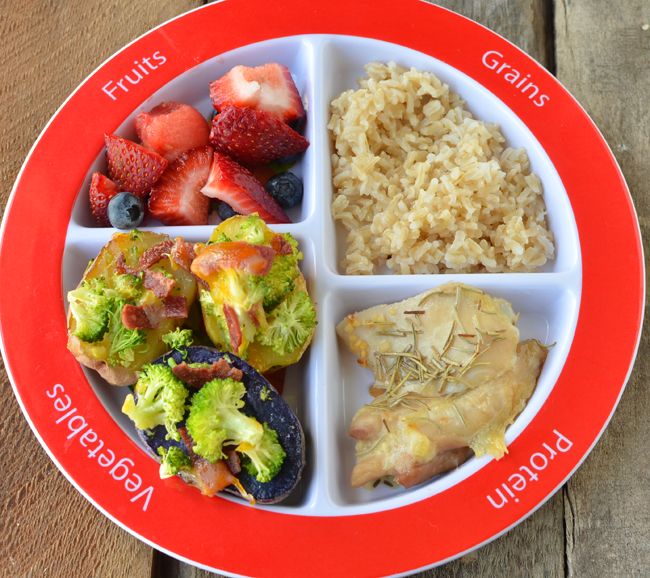 What’s more, this guide also contains 6 tips for getting started and more than 30 easy-to-follow recipes!
What’s more, this guide also contains 6 tips for getting started and more than 30 easy-to-follow recipes!
Medically reviewed by Jamie Johnson, Registered Dietitian Nutritionist (RDN), and Lauren Braaten, Pediatric Occupational Therapist (OT).
Best First Foods for Baby
Looking to serve your baby the best foods right from their very first bite?
Then this guide is for you! Filled with 10 of my all-time favorite foods for baby, all in one place!
These 10 wholesome foods are packed with vital nutrients for a growing baby, are full of flavor, and are hassle-free to make into a simple baby food puree or finger food for baby-led weaning. Plus, the ingredients are relatively easy to find in any grocery store.
10 of the Best First Foods for Baby- Apple
- Broccoli
- Salmon
- Egg
- Sweet Potato
- Yogurt
- Avocado
- Banana
- Squash
- Green Beans
Let’s take a closer look into each of these mouthwatering foods, shall we?
First time making homemade baby food? Then, I would suggest that you start by reading my very in-depth Guide on how to Make Homemade Baby Food – which goes over all the important information such as the best cooking tools to have on hand, safe storage, how to know when baby is ready for solids, how to introduce purees, the best first foods for baby, and more! If you are doing Baby-Led Weaning, then be sure to check out my Complete Guide to Baby-Led Weaning – which covers what exactly is baby-led weaning, to every parent’s concern of baby-led weaning and choking, this guide goes over it all.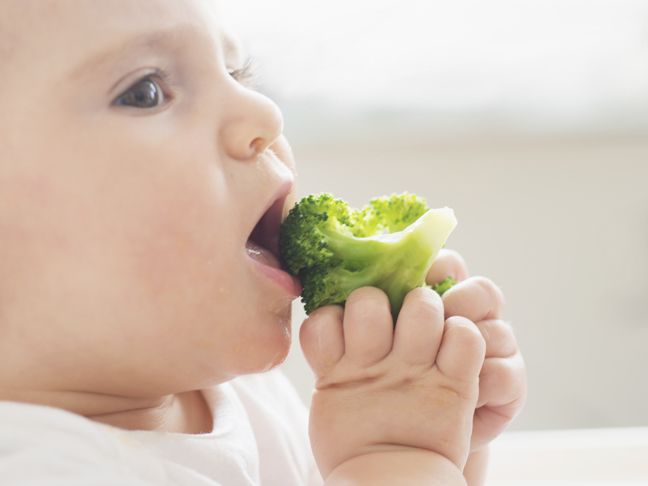 I will also share how to know when baby is ready for BLW, the top 10 best first foods, a helpful sample blw feeding schedule, helpful tools to have on hand, and much much more! You can also check out my best-selling cookbook for even more information and recipes!
I will also share how to know when baby is ready for BLW, the top 10 best first foods, a helpful sample blw feeding schedule, helpful tools to have on hand, and much much more! You can also check out my best-selling cookbook for even more information and recipes!
Best Foods for Baby Video
Watch this video to see how easy these 10 foods are to make for your baby.
When Is Your Baby Ready For Their First Bite?
Whether you decide to go with traditional weaning (purees), baby-led weaning or a combination of both, look for these readiness signs in your baby:
- Around 6 months of age
- Sitting with minimal assistance
- Good control of their head and trunk
- Bringing hands and toys to their mouth
- Appears interested in food, possibly by reaching for or leaning forward towards food
Before you start weaning your baby, you should consult with your pediatrician to make sure your child is developmentally ready.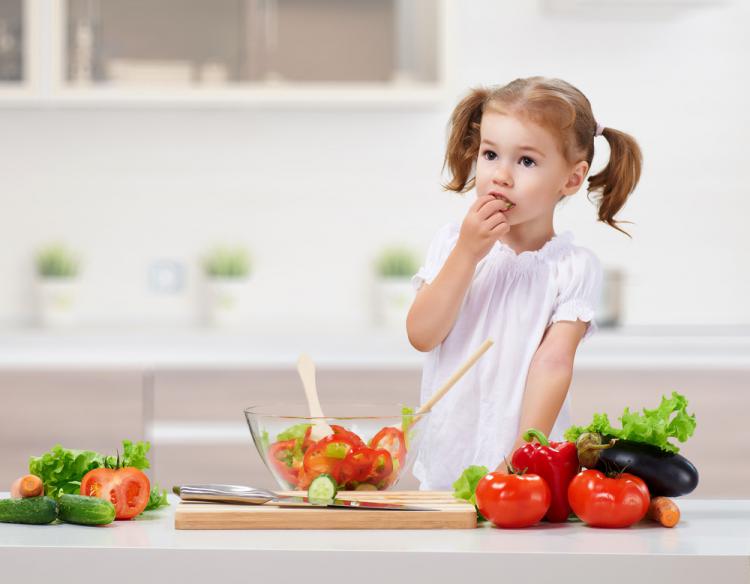
Tips for Getting Started
- Start Slowly – Start by serving a small amount of one food item to your baby once or twice a day to see how they will react. If they are reaching for more, then, by all means, give them more. If they keep tossing it on the floor or refusing to open their mouths, then take that food away and try again in a couple of days. It takes some time before they are eating entire meals.
- Cut Up Finger Foods – To avoid choking hazards, make sure you are cutting finger foods for baby-led weaning into long, 2-3 inch strips or small, mashable, pea-sized pieces. Usually, babies starting baby-led wearing prefer using their palmar grasp (holding onto the long 3″ piece of food), but you can also cut the food both ways to see which one your baby prefers.
- Be Patient – It might take a while for your baby to get into their eating groove. They may also love the idea of eating but get more food on the floor than in their mouths.
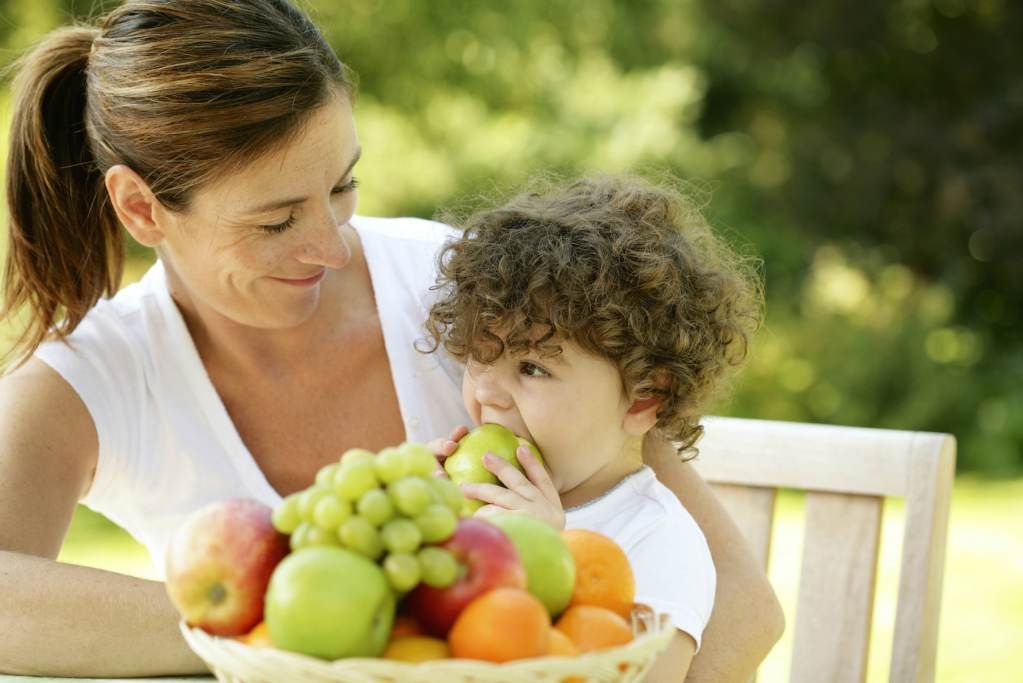 Babies might even seem interested in food but then turn their heads every time a spoon comes near their lips. It’s frustrating, I get it! But keep on serving healthy foods and be patient.
Babies might even seem interested in food but then turn their heads every time a spoon comes near their lips. It’s frustrating, I get it! But keep on serving healthy foods and be patient. - Eat as a Family – Whether you are doing purees or baby-led weaning, eating as a family promotes healthy food habits right from the start. By eating with your baby, you show them how to bring food from a plate to your mouth, chew, and swallow. And when babies see their mom or dad eating the same thing as they are, they are more likely to eat it!
- Mix It Up – Please do not take these 10 foods and serve them to baby all at once and for every meal. Sure, they are loaded with nutrients and flavor for a growing baby. But babies also need to be exposed to various fruits, veggies, grains, and meats. So mix things up and try to serve them different items each week.
- Add Seasoning – I definitely recommend serving food with spices, herbs, and added healthy fats (refined coconut oil, high-quality olive oil, or butter).
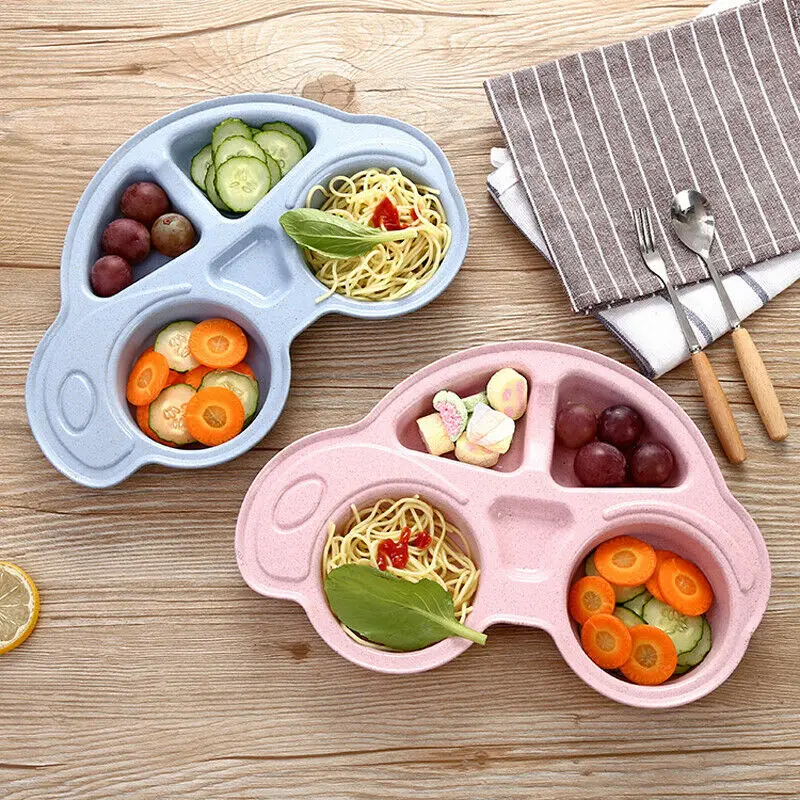 Not only do healthy fats aid in brain development and keep babies full up for longer, but they also make food taste way better! Fats are also needed to help absorb the fat-soluble vitamins A, D, E, and K.
Not only do healthy fats aid in brain development and keep babies full up for longer, but they also make food taste way better! Fats are also needed to help absorb the fat-soluble vitamins A, D, E, and K.
Purees vs. Baby-Led Weaning
Regardless of what you read or hear, there is no right or wrong way to feed your baby.
Purees might work better for your family because you can prep a ton of purees in an afternoon and have a freezer stash of food ready for your baby to eat anytime they are hungry.
Perhaps Baby-Led Weaning might be a more flexible way to serve food to your baby right alongside everyone else.
Or maybe a combo of purees and baby-led weaning would work best.
Either way, it’s important to remember that this stage of feeding is all about exposure to new flavors and textures of foods.
So, you do you!
Again, there is NO right way to feed your baby! Play around and find out what works best for both your baby and family and go with it.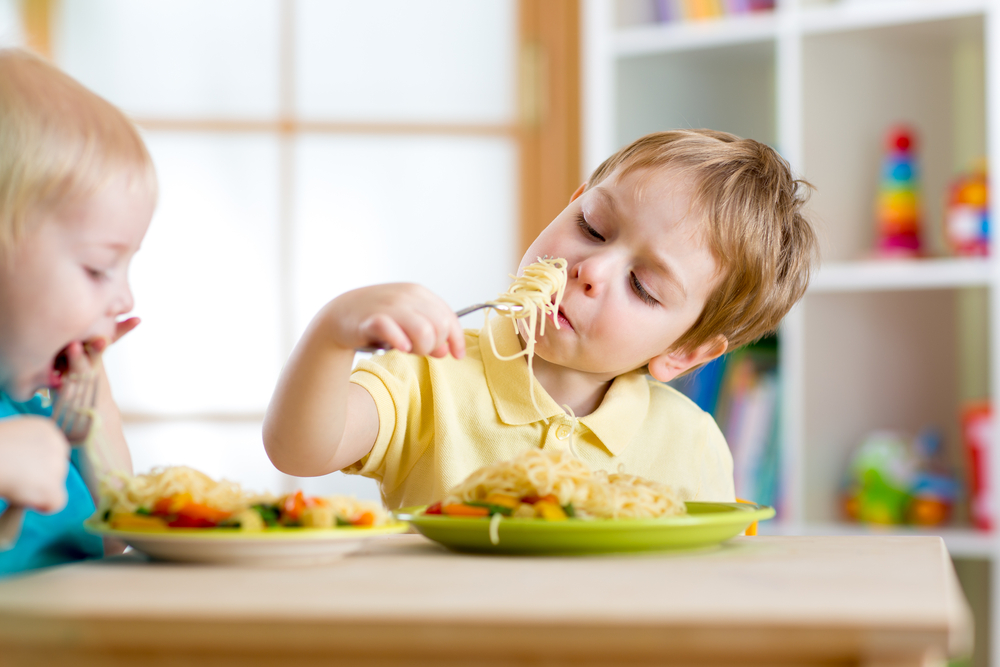
Kitchen Tools
Here are my favorite kitchen essentials to make the best homemade baby foods for your baby! These kitchen tools will help make the process of cooking, blending, and freezing baby food hassle-free. You can find a full list of my favorite baby food-making tools in my online Shop.
- Blender or Food Processor
- Freezer Storage Tray
- Fridge Storage Containers
- Stasher Bag
- Baking Sheet
- Steamer Basket
- Medium Saucepan
- Reusable Pouches
- easy to hold fork and spoon
- GOOtensils
- High Chair
- Suction Bowl and Spoon Set
- Bib with Food Catcher
Avocados are often called one of nature’s superfoods because they contain so many nutrients a person needs to survive and thrive.
Benefits of Avocado for Baby
They are packed with all the B vitamins (minus B12), vitamin C, a wide array of minerals and are high in brain-building omega-3 fatty acids. In fact, 88% of an avocado is made up of healthy fats, helping us absorb certain fat-soluble vitamins, control blood sugar, and support a healthy cardiovascular system. In other words, avocados are so nutritious; they are also ideal as the first food for your baby.
In fact, 88% of an avocado is made up of healthy fats, helping us absorb certain fat-soluble vitamins, control blood sugar, and support a healthy cardiovascular system. In other words, avocados are so nutritious; they are also ideal as the first food for your baby.
How to Make Avocado Baby Food Puree
Make sure to read the recipe card below for full ingredients and instructions!
- Peel and pit a quarter of a ripe avocado and place it on a cutting board.
- With the back of a fork, mash the avocado until smooth.
- If needed, you can add a teaspoon or two of formula or breast milk to make the puree extra smooth and creamy.
How to Serve Avocado for Baby-Led Weaning
Make sure to read the recipe card below for full ingredients and instructions!
- Cut a slice of avocado off of the pit.
- Using a small knife, cut into the peel 1/3 of the way up the slice of avocado until you get to the flesh.
- Peel off 2/3 of the peel and hand your baby the peel side of the avocado.
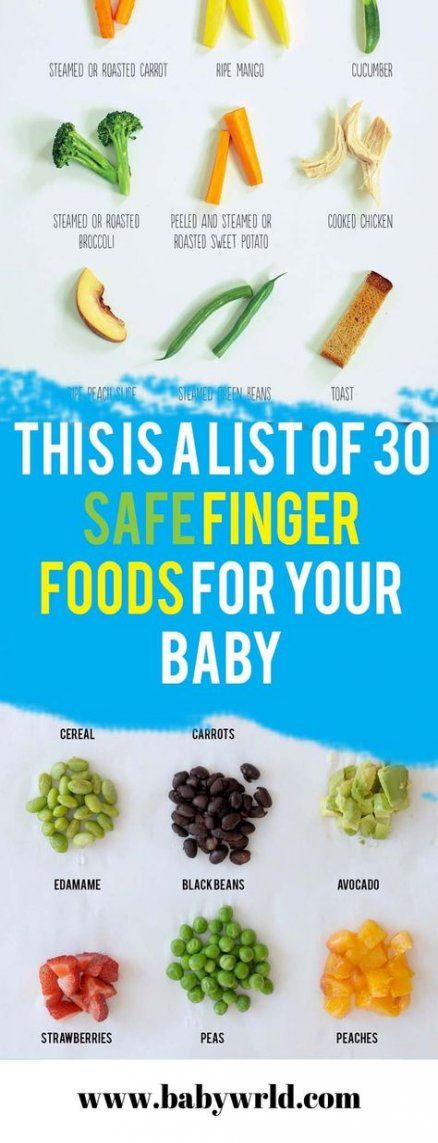 This provides a nice handle for babies to hold while they eat the avocado.
This provides a nice handle for babies to hold while they eat the avocado.
Want more avocado recipes? Get 4 more ways to serve avocado to baby here!
EggEggs are another amazing first food for babies and can be served any time of the day.
Benefits of Eggs for Baby
Egg yolks are packed with choline, an important nutrient for your baby’s brain development, and the whites are excellent sources of protein. Pasture-raised eggs are a good course of brain-boosting Omega-3s.
How to Make Egg Baby Food PureeMake sure to read the recipe card below for full ingredients and instructions!
- Hard-boil an egg, then peel away the shell and white part.
- Place the cooked egg yolk on a cutting board or baby-safe plate.
- Using the back of a fork, mash the egg yolk until smooth, adding a teaspoon or two of breast milk or formula if needed to make it creamy.
Make sure to read the recipe card below for full ingredients and instructions!
- Peel a hard-boiled egg and cut it into quarters the long way.
 Scrambled eggs, plain omelets, or egg roll-ups also work great as finger food for babies.
Scrambled eggs, plain omelets, or egg roll-ups also work great as finger food for babies. - Place the egg quarters on baby’s highchair tray or in a bowl.
Sweet Potato
Sweet potatoes are also at the top of my list when it comes to the first foods to introduce to babies. The nutritional value of sweet potatoes is outstanding, and their naturally sweet taste makes them easy to introduce to your baby.
Benefits of Sweet Potato for Baby
Sweet potatoes are also high in beta-carotene and vitamin C and the ultra-important electrolyte mineral, potassium! Sweet potatoes also contain good levels of vitamin E, calcium, and folate. Due to their high fiber content, sweet potatoes helps support a healthy digestive tract and promote regular bowel movements for your baby.
How to Make Sweet Potato Baby Food Puree
Make sure to read the recipe card below for full ingredients and instructions!
- Peel and chop 1-2 sweet potatoes.
- Place them in a steamer basket over boiling water and steam for 10-12 minutes or until tender when pricked with a fork.
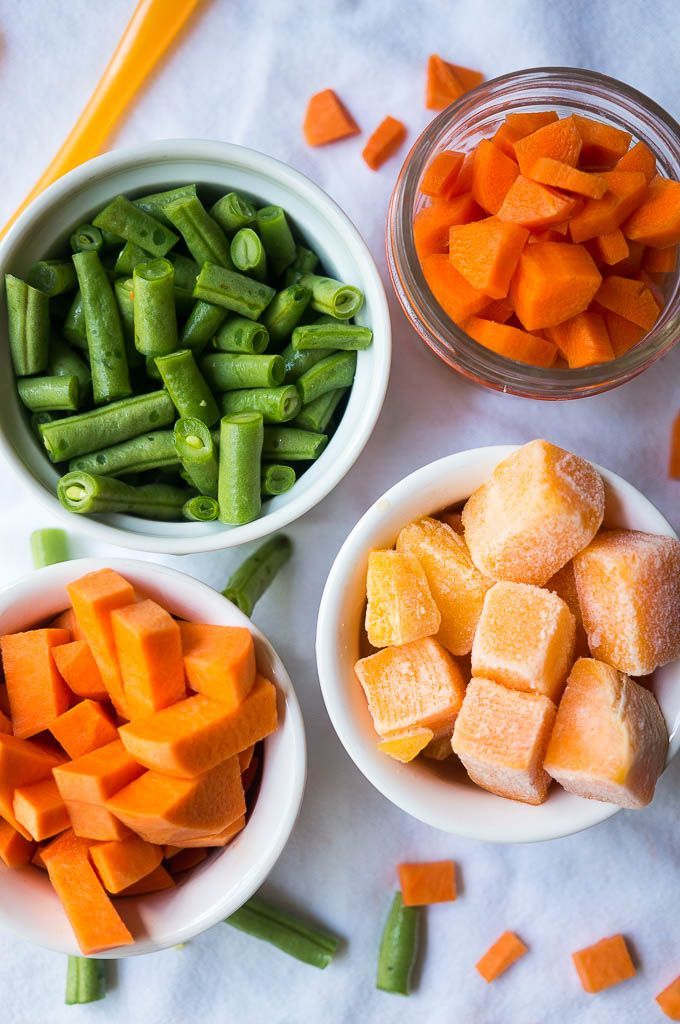
- Add cooked sweet potatoes to a food processor or blender, and puree for 1-2 minutes until completely smooth, adding water, fresh breast milk or formula, in 1/4 cup increments if needed. I had to use 1 cup of water for the puree above.
- For more sweet potato recipes your baby can enjoy, visit these posts: Sweet Potato + Curry Baby Food Puree, Sweet Potato + Thyme Baby Food Puree, and Sweet Potato with Coconut Milk Baby Puree.
How to Serve Sweet Potatoes for Baby-Led Weaning
Make sure to read the recipe card below for full ingredients and instructions!
- Peel and slice the sweet potato into long strips that are half an inch thick.
- Place wedges a steamer basket and steam for 8-10 minutes or until tender when pricked with a fork. Remember, you want them soft but not overcooked. Overcooked sweet potatoes tend to fall apart when babies fist them.
- Let them cool and serve to baby. This recipe will last 5 days in the fridge.
Want more sweet potato recipes? Then head over to Sweet Potato for Baby – 6 Delicious Ways
Apples
Apples are a yummy, nutrient-dense first food for babies too. They’re easy to digest, high in immune-boosting nutrients, and perfectly sweet on their own.
They’re easy to digest, high in immune-boosting nutrients, and perfectly sweet on their own.
Benefits of Apples for Baby
We’ve all heard the saying “An apple a day…” well, there may be some truth to this — apples are high in polyphenols and phytonutrients, which are potent antioxidants that help protect babies and kiddos from disease and illness. In addition to antioxidants, apples contain insoluble and soluble fiber, helping protect babies from diarrhea and constipation.
How to Make Apple Baby Food Puree
Make sure to read the recipe card below for full ingredients and instructions!
- Peel and chop 2-3 apples and place them in a steamer basket over boiling water and cook for 8-10 minutes or until tender when pricked with a fork.
- Transfer the apples to a blender and puree for 1-2 minutes or until smooth, adding liquid (water, fresh breastmilk, or formula) in 1/4 cup increments if needed.
- For more amazing apple puree recipes, check out Apple + Cinnamon Baby Food Puree, Apple + Clove Baby Food Puree and Apple + Coconut Milk Baby Food Puree.

How to Serve Apples for Baby-Led Weaning
Make sure to read the recipe card below for full ingredients and instructions!
- Peel and slice an apple and place in a steamer basket over boiling water for 6-8 minutes or until just tender when pricked with a fork. You want the slices soft but not falling apart.
- Let them cool and serve to baby. You may also add a pinch of cinnamon to the apple slices before serving, but this is optional. Steamed apple slices will last in the fridge for 3 days.
- Add a squeeze of lemon juice to prevent them from browning.
Broccoli
Broccoli is definitely one of the best first food choices for your baby.
Benefits of Broccoli for Baby
This green cruciferous veggie has been shown to lower cholesterol, aid in detoxification, rebuild vitamin D stores, and help combat inflammation. Steaming ensures the broccoli retains the most nutrients and that it won’t become too mushy — a characteristic many kiddos frown upon.
How to Make Broccoli for Baby Food Puree
Make sure to read the recipe card below for full ingredients and instructions!
- Place 2 cups of broccoli florets in a steamer basket over boiling water and steam for 10-12 minutes until tender.
- Transfer to a blender and puree for 1-2 minutes, adding 1/4 cup of liquid (water, fresh breastmilk, or formula) until you have a creamy puree.
- Here are some more amazing broccoli recipes: Broccoli + Chives Baby Food Puree and Broccoli + Olive Oil Puree Baby Food Recipe.
How to Serve Broccoli for Baby-Led Weaning
Make sure to read the recipe card below for full ingredients and instructions!
- Place a cup of broccoli florets into a steamer over boiling water and steam for 8-10 minutes or until tender when pricked with a fork.
- Let them cool and serve to your baby in florets or chopped up into pea-sized pieces. Here is a recipe for my fav roasted broccoli for baby.
Wild-caught salmon is one of the world’s healthiest foods and believe it or not, is a great first food for baby.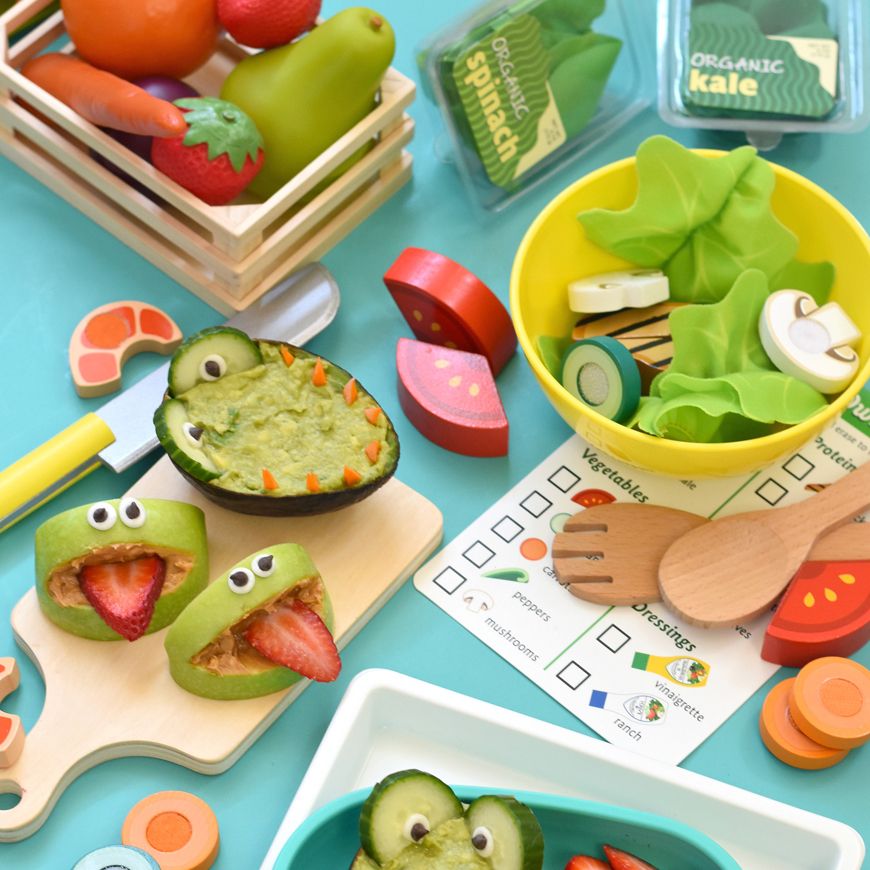
Benefits of Salmon for Baby
This is because it is packed with vitamins and minerals like vitamins D and B-12 and omega-3 fatty acids. In fact, salmon is one of the best sources of omega-3s! Combined, these nutrients help improve bone health, boost brain function, promote a healthy heart, and reduce ADHD symptoms in children.
How to Make Salmon Baby Food PureeMake sure to read the recipe card below for full ingredients and instructions!
- I used grilled salmon as that is what I had on hand, but any cooked salmon would work. Place 1/4 cup of cooked salmon along with 1 cup of cooked sweet potato or squash into a blender and puree for 1-2 minutes, adding 1/4 cup of liquids (water, fresh breast milk, or formula) until smooth.
- You can use any fruit or veggie your baby prefers in this recipe. Adding another veggie to the puree also helps the salmon blend into a nice, smooth puree.
Make sure to read the recipe card below for full ingredients and instructions!
- Flake some cooked salmon onto a baby-safe plate or their high chair tray, making sure to pick off any bones.
 Let your baby eat them with their hand or with this baby-led weaning fork.
Let your baby eat them with their hand or with this baby-led weaning fork.
Yogurt
Plain, whole milk yogurt is a tasty first food for your baby and is great served by itself or mixed into other purees.
Benefits of Yogurt for Baby
Produced by the bacterial fermentation of cow’s milk, yogurt is full of beneficial probiotics that improve digestion and constipation that help keep our gut in good working order. Yogurt is also high in protein (especially Greek or skyr varieties) and calcium, helping our bones and teeth stay healthy and strong.
Whole milk yogurt is recommended over low fat because fat helps with brain development. Plus, fat and protein can help maintain fullness for longer. Yogurt has also been shown to help improve blood sugar control (the plain variety, not the sweetened, fruit, or vanilla flavored) and help reduce total cholesterol levels while increasing our “good” HDL cholesterol. It’s best to avoid any flavored yogurt at this age so your baby does not get too much sugar. You can also serve your baby plain goat’s milk as a nice alternative to cow’s milk yogurt. I recommend waiting to serve plant-based yogurts to your baby until 7 months, but keep in mind; they will not have the same nutrient profile as dairy yogurts.
You can also serve your baby plain goat’s milk as a nice alternative to cow’s milk yogurt. I recommend waiting to serve plant-based yogurts to your baby until 7 months, but keep in mind; they will not have the same nutrient profile as dairy yogurts.
How to Make Yogurt Baby Food Puree
Make sure to read the recipe card below for full ingredients and instructions!
- Place a small spoonful in a bowl and serve to your baby.
How to Serve Yogurt for Baby-Led Weaning
Make sure to read the recipe card below for full ingredients and instructions!
- Place a small spoonful of yogurt into a bowl, load up this self-feeding GOOtensil with a small amount of yogurt, and hand it to your baby.
NumNum Pre-Spoon GOOtensils
Our favorite spoon for baby! Designed to work great with both purees and soft solid foods, the spoon holds onto the food and makes it easier for baby to self-feed themselves.
View Product
Banana
Bananas and babies are pretty much synonymous.
Benefits of Banana for Baby
Bananas are sweet, mushy, and easy to digest, so they are ideal as first foods for babies. They are a good source of potassium and fiber, and here’s the best part: you don’t have to peel, chop, steam, or puree them. Just peel, pinch with your (clean) finger, and then serve! Spoons are totally optional. Older babies love to squish bananas on their own with a little pincer grasp. But beware of messy banana on bibs, faces, high chair trays, clothing, the floor, the dog, your hair. Oh, bananas! Many a happy baby has gobbled, gulped, and giggled his way through those first delicious bites of bananas! 🍌
How to Make Banana Baby Food Puree
Make sure to read the recipe card below for full ingredients and instructions!
- Take a ripe banana and peel.
- Place half of it on a cutting board, and mash with the back of a fork until it’s rich and creamy.
Make sure to read the recipe card below for full ingredients and instructions!
- Cut a banana in half, and then gently cut about 2 inches from the stem around the banana.
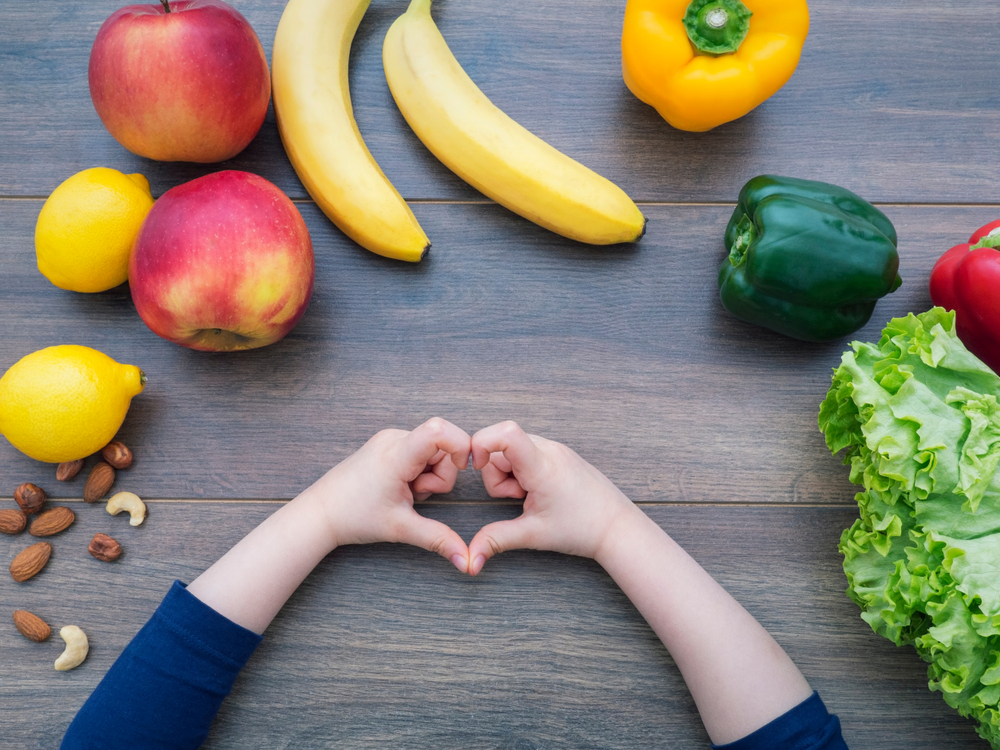
- Peel the top off, but leave the banana attached to give your baby a handle to hold onto.
- Hand your baby the stem part of the banana for them to hold onto while they eat it.
Looking for more banana recipes for your baby? I’ve got you covered: Banana Baby Food – 8 Ways (Puree & Baby-Led Weaning)
Squash
Squash comes in many delicious varieties and is one of the healthiest first food for babies.
Benefits of Squash for Baby
Delicata, Acorn, Hubbard, Kabocha, and Butternut are all part of the winter squash family and are all high in carotenoids, a special class of antioxidants that may help prevent cancer and inflammation. Winter squash may also help regulate blood sugar, reduce the risk of cardiovascular disease, and improve mood, thanks to its high content of mood-boosting Omega-3 fatty acids. Plus, winter squash has a robust, naturally sweet taste that babies will enjoy year-round.
How to Make Squash Baby Food Puree
Make sure to read the recipe card below for full ingredients and instructions!
- Place cubed squash (any variety) in a steamer basket and steam for 10-12 minutes or until tender when pricked with a fork.
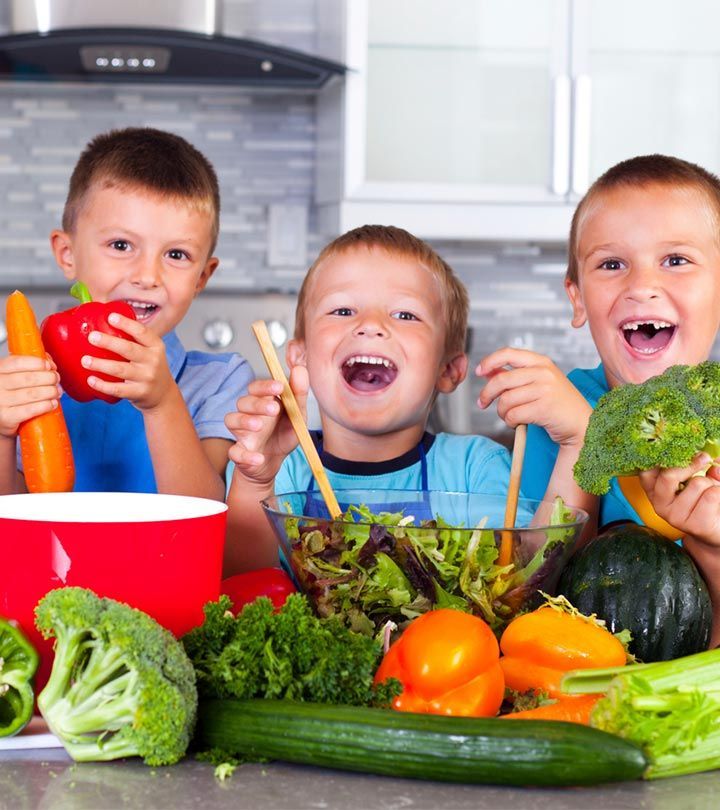
- Transfer to a blender and puree for 1-2 minutes on high, adding liquid (water, fresh breastmilk, or formula) in 1/4 cup increments until creamy. You can use frozen or precut squash to make your life a little easier.
How to Serve Squash for Baby-Led Weaning
Make sure to read the recipe card below for full ingredients and instructions!
- Cut long strips of squash and place them in a steamer basket over boiling water.
- Steam for 8-10 minutes until tender.
- Let them cool and serve. I love using this crinkle cutter to make veggies easier for my baby to grip.
Green Beans
In just one serving of green beans, your baby will be getting a nice big dose of essential nutrients.
Benefits of Green Beans for Baby
Nutrients found in green beans can help prevent various conditions, including asthma, ear infections, and even the common cold and flu! Although green beans have a rich, green color, they also provide your baby with carotenoids, normally found in vibrantly colored orange fruits and veggies.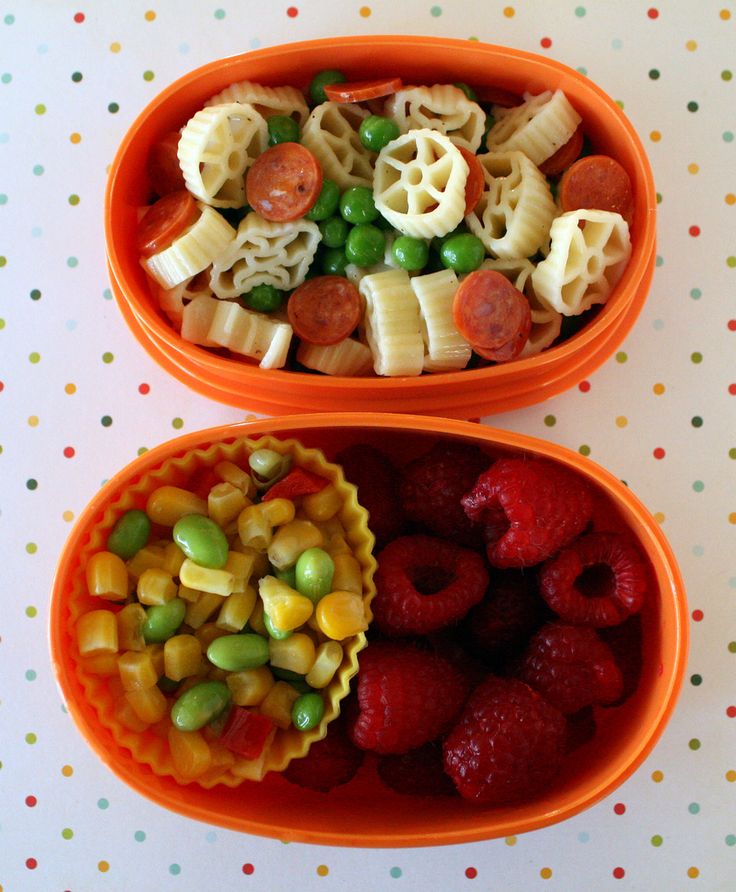 These carotenoids are potent health-supporting antioxidants that will help keep your baby free from illness!
These carotenoids are potent health-supporting antioxidants that will help keep your baby free from illness!
How to Make Green Beans Baby Food Puree
Make sure to read the recipe card below for full ingredients and instructions!
- Place two cups of green beans in a steamer basket over boiling water and steam for 8-10 minutes or until tender.
- Transfer the beans to a blender and puree for 1-2 minutes, adding 1/4 cup liquid (water, fresh breastmilk, or formula) if needed until smooth.
- Here are some more awesome green bean puree recipes: Green Bean + Basil Baby Food Puree, Green Bean + Coconut Oil Organic Baby Food Puree, and Green Beans + Parsley Baby Food Puree.
How to Serve Green Beans for Baby-Led Weaning
Make sure to read the recipe card below for full ingredients and instructions!
- Place a cup of green beans in a steamer basket and steam for 6-8 minutes or until tender when pricked with a fork.
- Let them cool.
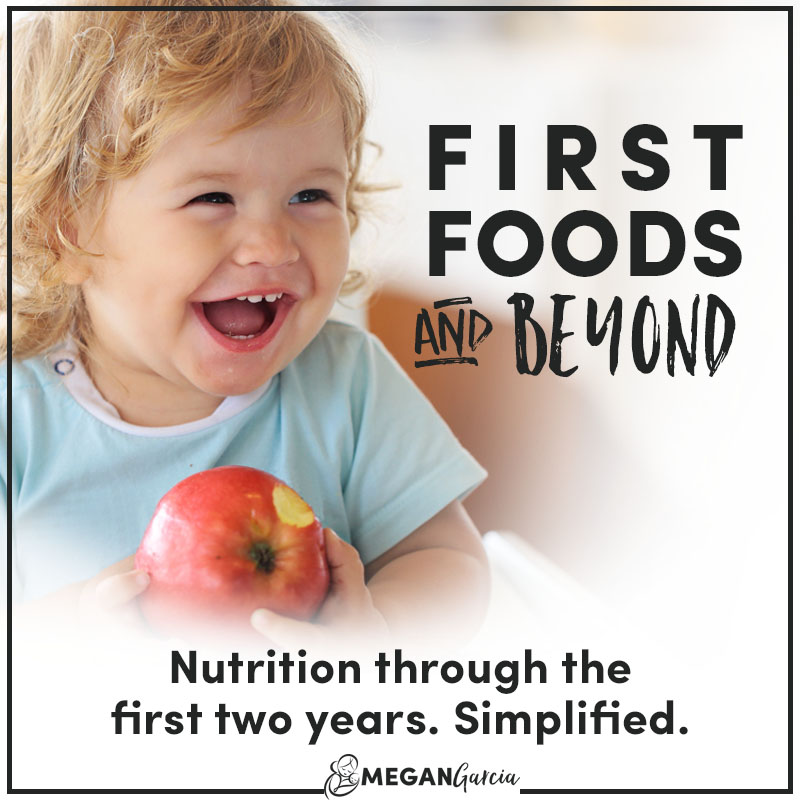
- If they are too long, cut them in half before serving to your baby.
- 1/4 avocado
- 1 large egg
- 1-2 medium sweet potatoes
- 1-3 apples, such as gala, fuji or honeycrisp
- 1-2 cups broccoli florets
- 1/4 cooked salmon
- 1-2 tbsp yogurt, plain whole fat or 2% fat
- 1/2 ripe banana
- 1-2 cups squash
- 1-2 cups green beans, trimmed
Avocado For Baby
For Puree: Simply peel and pit a quarter of a ripe avocado and place on a cutting board. Then with the back of a fork, mash the avocado until smooth.
 You can add in a teaspoon or two of formula or breast milk to make it super smooth and creamy.
You can add in a teaspoon or two of formula or breast milk to make it super smooth and creamy.For Baby-Led Weaning: Cut a slice of avocado off of the pit. Using a small knife, cut into the peel 1/3 of the way up the slice of avocado until you get to the flesh. Peel off 2/3 of the peel and hand baby the peel side of the avocado. This provides a nice handle for baby to hold while they eat the avocado.
Egg for Baby
For Puree: Using a hardboiled egg, peel away the shell and white part of the egg. Then place the cooked egg yolk on a cutting board or baby-safe plate. Using the back of a fork, mash the egg yolk until smooth, adding in a teaspoon or two of breast milk or formula if needed to make it creamy.
For Baby-Led Weaning: Peel a hardboiled egg and then cut into quarters the long way.
Sweet Potato for Baby
For Puree: Peel and chop 1-2 sweet potatoes.
 Place in a steamer basket over boiling water and steam for 10-12 minutes or until tender when pricked with a fork. Add cooked sweet potatoes to a food processor or blender, and puree for 1-2 minutes until completely smooth, adding in water in 1/4 cup increments if needed. I had to use 1 cup of water for the puree above.
Place in a steamer basket over boiling water and steam for 10-12 minutes or until tender when pricked with a fork. Add cooked sweet potatoes to a food processor or blender, and puree for 1-2 minutes until completely smooth, adding in water in 1/4 cup increments if needed. I had to use 1 cup of water for the puree above. For Baby-Led Weaning: Peel and slice the sweet potato into long strips that are half an inch thick. Place in a steamer basket and steam for 8-10 minutes or until just tender when pricked with a fork. You want them soft but not overcooked. Overcooked sweet potatoes tend to fall apart when baby fists them. Let cool and serve to baby. Will last 5 days in the fridge.
Apple for Baby
For Puree: Peel and chop 2-3 apples and place in a steamer basket over boiling water and cook for 8-10 minutes or until tender. Transfer the apples to a blender and puree for 1-2 minutes or until smooth, adding in liquid (water, breastmilk or formula) in 1/4 cup increments if needed.
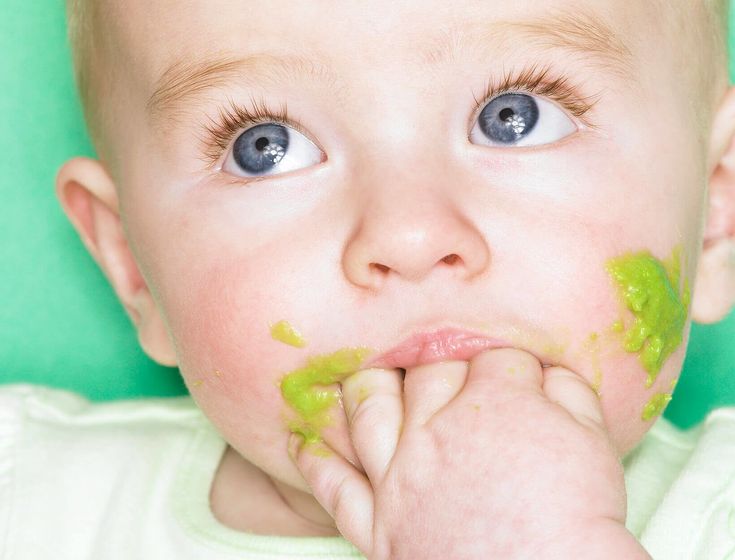
For Baby-Led Weaning: Peel and slice an apple and place in a steamer basket over boiling water for 6-8 minutes or until just tender when pricked with a fork. You want it soft but not falling apart. Let cool and serve to baby. Optional – sprinkle a pinch of cinnamon on apple slices before serving. Steam apple slices will last in the fridge for 3 days, add a squeeze of lemon juice to help them from browning.
Broccoli for Baby
For Puree: Place 2 cups of broccoli florets in a steamer basket over boiling water and steam for 10-12 minutes until tender. Transfer to blender and puree for 1-2 minutes, adding in 1/4 cup of liquid (water, breastmilk or formula) until you have a smooth puree.
For Baby-Led Weaning: Place a cup of broccoli florets into a steamer over boiling water and steam for 8-10 minutes or until tender when pricked with a fork. Let cool and serve to baby in florets or chopped up into “pea” size pieces.
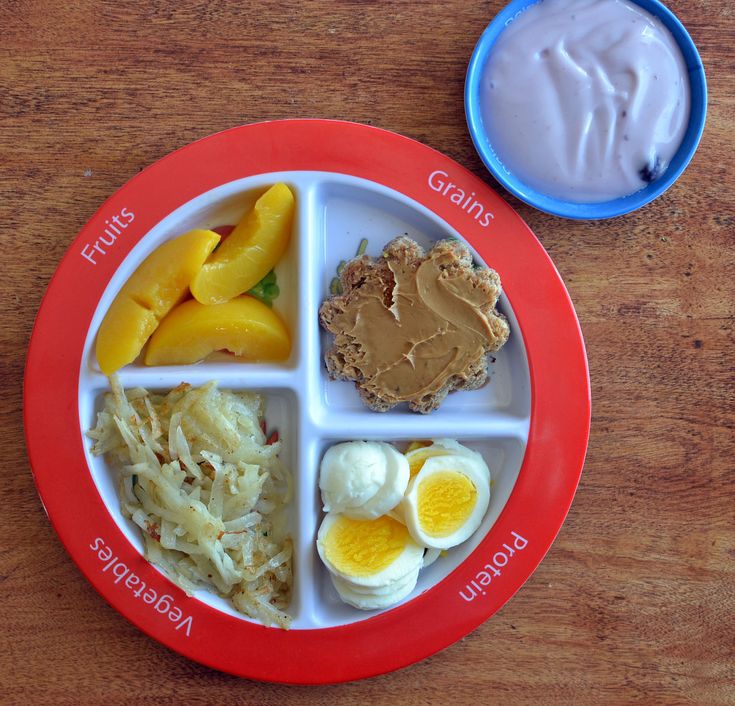
Salmon for Baby
For Puree: I used grilled salmon as that is what I had on hand, but any cooked salmon would work. Place 1/4 cup cooked salmon along with 1 cup cooked sweet potato or squash into a blender and puree for 1-2 minutes, adding in 1/4 cup of liquids (water, breast milk or formula) until smooth. You can really use any fruit or veggie your baby prefers in this recipe. Adding another veggie in the puree helps the salmon blend into a nice smooth puree.
For Baby-Led Weaning: Flake some cooked salmon onto a baby-safe plate or their high chair tray, making sure to pick off any bones. Let baby eat with their hand or with a baby fork.
Yogurt for Baby
For Puree: Place a small spoonful in a bowl and serve to baby.
For Baby-Led Weaning: Place a small spoonful of yogurt into a bowl and load up a self-feeding baby utensil with a small amount of yogurt and hand it over to baby.
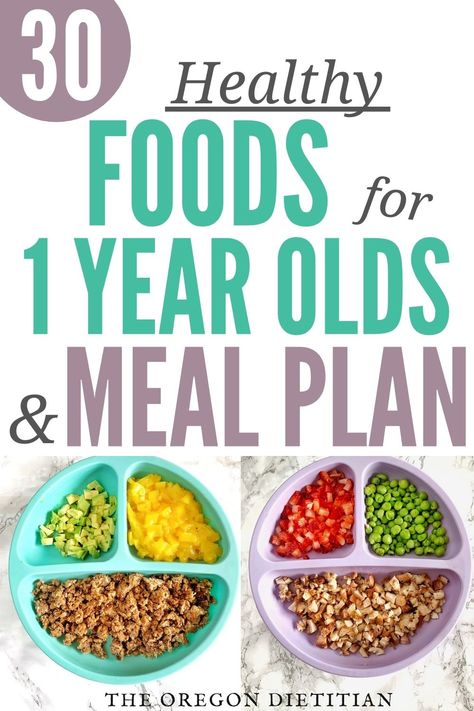
Banana for Baby
For Puree: Place half of a ripe and peeled banana on a cutting board and mash with the back of a fork until smooth.
For Baby-Led Weaning: Cut a banana in half, and then gently cut about 2 inches from the stem around the banana. Peel the top off, but leave the banana attached, thus giving baby a handle to hold onto. Hand baby the stem part of the banana for them to hold onto while they eat the banana.
Squash for Baby
For Puree: Place cubed squash (any variety) in a steamer basket and steam for 10-12 minutes or until tender when pricked with a fork. Transfer to a blender and puree for 1-2 minutes on high, adding in liquid (water, breastmilk or formula) in 1/4 cup increments until smooth. You can use frozen or pre-cut squash to make your life a little easier.
For Baby-Led Weaning: Cut long strips of squash and place in a steamer basket over boiling water.
 Steam for 8-10 minutes until tender. Let cool and serve.
Steam for 8-10 minutes until tender. Let cool and serve.
Green Beans for Baby
For Puree: Place two cups of green beans in a steamer basket over boiling water and steam for 8-10 minutes or until tender. Transfer the beans to a blender and puree for 1-2 minutes, adding in 1/4 cup liquid (water, breastmilk or formula) if needed until smooth.
For Baby-Led Weaning: Place a cup of green beans in a steamer basket and steam for 6-8 minutes or until tender when pricked with a fork. Let cool, cut in half if green beans are too long and serve to baby.
Age: 4+ months (stage one)
Storage: Purees can be stored in an air-tight container in the fridge for up to 4 days, and in the freezer for up to 3 months.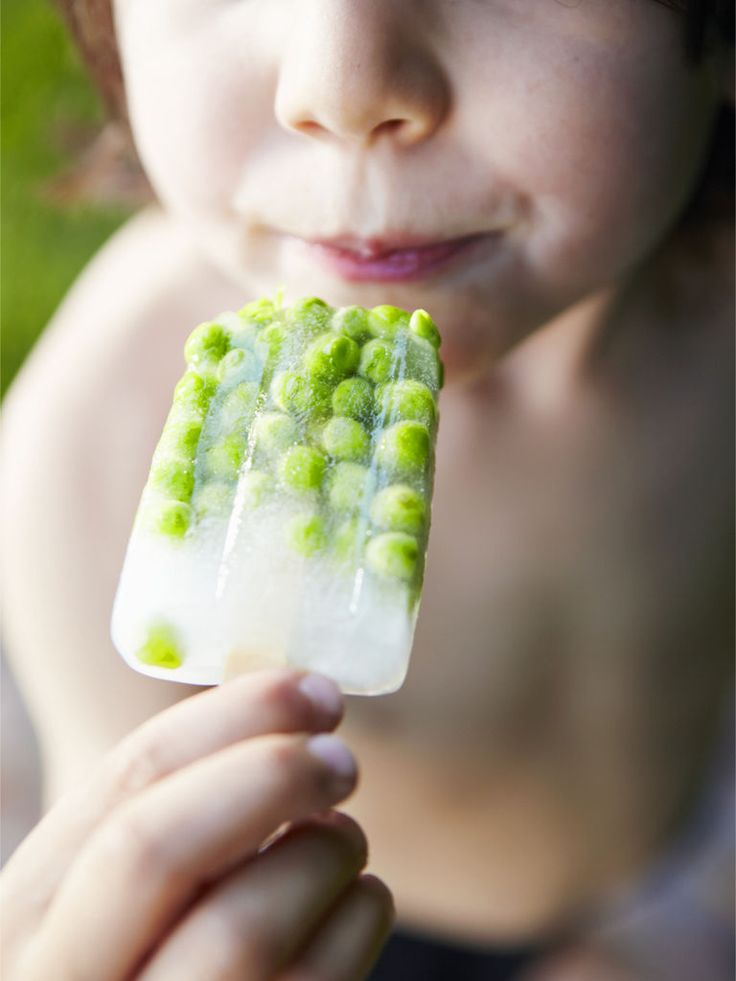 Baby-led weaning foods can be stored in an air-tight container for up to 4 days.
Baby-led weaning foods can be stored in an air-tight container for up to 4 days.
Freezer Tray
Grabease Utensil
Bumkins Baby Bowl
Tripp Trapp High Chair
Did you make this recipe?
Tag @babyfoode on Instagram and hashtag it #babyfoode!
Pin Recipe Email a Friend
Proper nutrition of a child is a guarantee of health - Children's City Polyclinic No. 1
Every parent wants his child to grow up healthy, smart, happy.
From childhood, we must teach our children to choose from the variety of foods that are really good for health. The nutrition of children is somewhat different from the nutrition of adults. If the child's nutrition system is built correctly, then the child develops normally, both physically and mentally.
Make your family's way of life by introducing your child to proper nutrition every day. There is no need to arrange constant lectures from this on the topic of what is useful and what is harmful.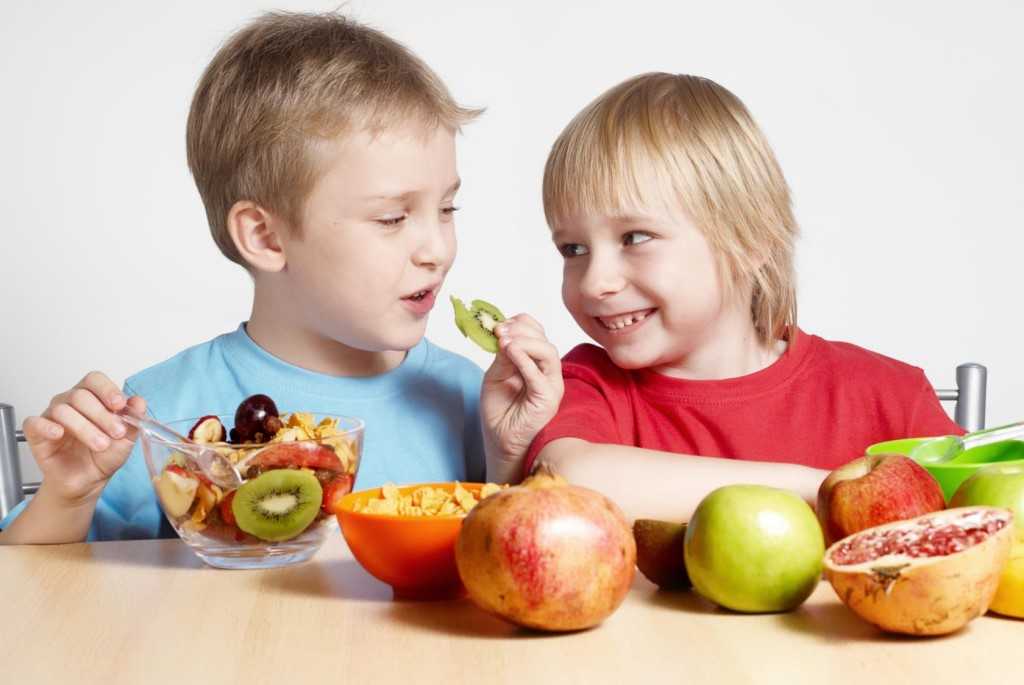 By actively communicating with your child, setting an example, you instill good eating habits.
By actively communicating with your child, setting an example, you instill good eating habits.
Only good things should be spoken at the table. The situation should help the child to relax, then the appetite will be good and the mood will be friendly. Children can help you with serving and decorating dishes. When serving vegetables and fruits, ask the children what vitamins and minerals they contain and why they are so useful. In order to organize the proper nutrition of the child, you need to follow several important rules:
Rule 1
Food should be varied.
This is an important condition for the child's body to receive all the substances necessary for growth and development. Every day, the child's menu should include: fruits and vegetables; meat and fish; milk and dairy products; grain products (bread, cereals, cereals). Insufficiency or excess of food consumed by a child can adversely affect the activity of the gastrointestinal tract, contribute to metabolic disorders, increase overweight (even to various degrees of obesity) or lead to malnutrition.
If the child refuses, there is a healthy dish, offer him to experiment and make the dish unusual.
So, with the help of dried fruits and nuts, you can put a funny face on porridge, use ketchup and greens to draw a pattern on scrambled eggs, put mashed potatoes on a plate in the form of a snowman figure, etc.
What should not be used in children's nutrition:
- Offal, except liver, tongue, heart; blood, liver, raw smoked sausages.
- Deep-fried foods and culinary products, chips.
- Curds, condensed milk with vegetable fats.
- Koumiss and fermented milk products containing ethanol (more than 0.5%).
- Cream confectionery containing vegetable protein.
- First and second courses based on fast food concentrates.
- Vinegar, mustard, horseradish, hot peppers and other hot spices and food products containing them, including hot sauces, ketchups, mayonnaises and mayonnaise sauces.

- Pickled vegetables and fruits.
- Natural coffee and carbonated drinks, apricot kernels, peanuts.
- Products, including confectionery, containing alcohol.
- Food products containing a large amount of food additives in their composition (information is indicated by the manufacturer on consumer packaging).
- Dry concentrates for cooking first and second courses (soups, Dosherak vermicelli, cereals).
Rule 2
The child should eat regularly.
Compliance with the diet of children is of great importance for the absorption of nutrients by the body. Preschool children are recommended to eat 4-5 times a day, every 3 hours, at the same time, distributing the diet as follows: breakfast - 25%, lunch - 35%, afternoon snack - 15%, dinner - 25% . At school age, it is advisable to have four meals a day, every 4 hours with an even distribution of the daily ration: breakfast - 25%, second breakfast - 20%, lunch - 35%, dinner - 20%.
Try to stop snacking and teach your child to eat only at the table. If this still doesn't work, offer fruit, biscuits, juice for a snack - food that will help drown out hunger, but will not ruin your appetite.
Proper organization of meals at school in the form of hot school breakfasts and lunches is an important health-improving measure for student children in extended day groups, whose diet should be 50-70% of the daily norm, which, unfortunately, parents do not have enough are paying attention. Eating sandwiches, pizza, chips, chocolate bars is harmful because - this food is inferior in composition and also irritates the stomach, contributing to the development of gastritis.
Rule 3
A child's diet should replenish his daily energy expenditure.
If your child is overweight, limit the amount of sweets and high-calorie desserts, empty the refrigerator. Put a bowl of fruit on the table, a plate of whole grain bread.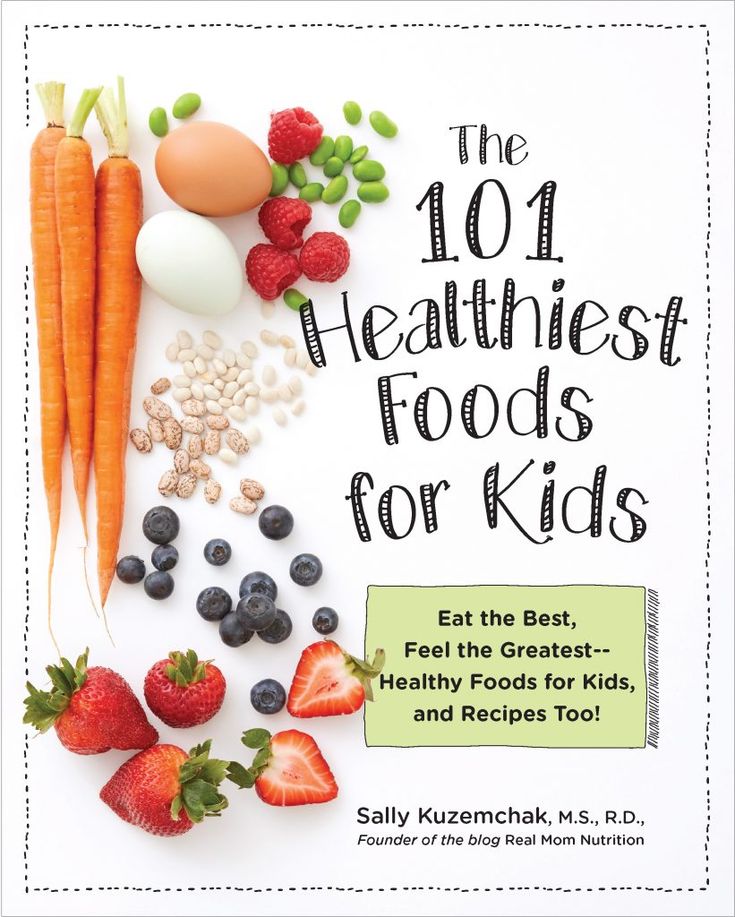 Children can eat fruits without any restrictions, it is almost impossible to overeat them, and they are very useful. With a lack of any mineral substance or vitamin, the child himself will ask for the apple or even greens he needs.
Children can eat fruits without any restrictions, it is almost impossible to overeat them, and they are very useful. With a lack of any mineral substance or vitamin, the child himself will ask for the apple or even greens he needs.
Try to get your child involved in sports, take walks together, even if little by little, but regularly.
Thus, building proper nutrition for children requires taking into account the characteristics of the child's body, knowledge of certain rules and principles of healthy nutrition.
The material was prepared by the editorial and publishing department of GBUZ JSC "CMP" - 2020
Proper nutrition for children - the basics of a healthy diet for every day
Many parents are much more responsible for organizing the nutrition of their children than they are for their own diet. And it’s completely in vain, because the formation of a culture of healthy nutrition for children is formed not only by compiling an ideal menu for a child. The eating behavior of the whole family is extremely important, which the baby pays attention to and which in the future forms his own eating habits and preferences.
The eating behavior of the whole family is extremely important, which the baby pays attention to and which in the future forms his own eating habits and preferences.
The importance of proper nutrition for children
The development of the child's body is influenced by a combination of factors, but the most important role belongs to food. The development of the child, the formation of basic skills, not only in childhood, but also in adulthood, depends on a diet that is correctly compiled in early childhood.
Proper nutrition improves mental acuity, memory, mood, promotes proper growth and development of the body, helps maintain weight and metabolism. With a balanced healthy diet, you can prevent the development of chronic diseases such as obesity, diabetes, arterial hypertension and a number of others.
Proper nutrition is one of the main ways to maintain health and a high quality of life for a long time. Most human eating habits are formed in childhood and remain with him for life. Therefore, it is very important that the baby eats properly from the first days of life.
Therefore, it is very important that the baby eats properly from the first days of life.
What is the right diet for a child
A healthy diet for a child every day is food that contains all the necessary nutrients. Unfortunately, today many children make their choice in favor of fast food, and parents do not limit them in any way. Yes, it is quite tasty and such dishes are prepared quickly, which means that you can quickly feed the child without wasting your time preparing food.
But the fact is that fast food is extremely unhealthy, not only for children, but also for adults. It leads to the development of obesity, disrupts metabolic processes, affects the digestive organs, which does not fit into the idea of healthy nutrition at all.
Here are the basic principles of proper nutrition:
- every day on the table there should be products that completely cover the body's need for nutrients;
- nutrition should be balanced;
- food is recommended to be boiled, baked in the oven, steamed, but it is better to refuse fried, smoked, pickled, canned food, as well as fast food;
- if the child has intolerance to certain products, then the menu should be adjusted accordingly.
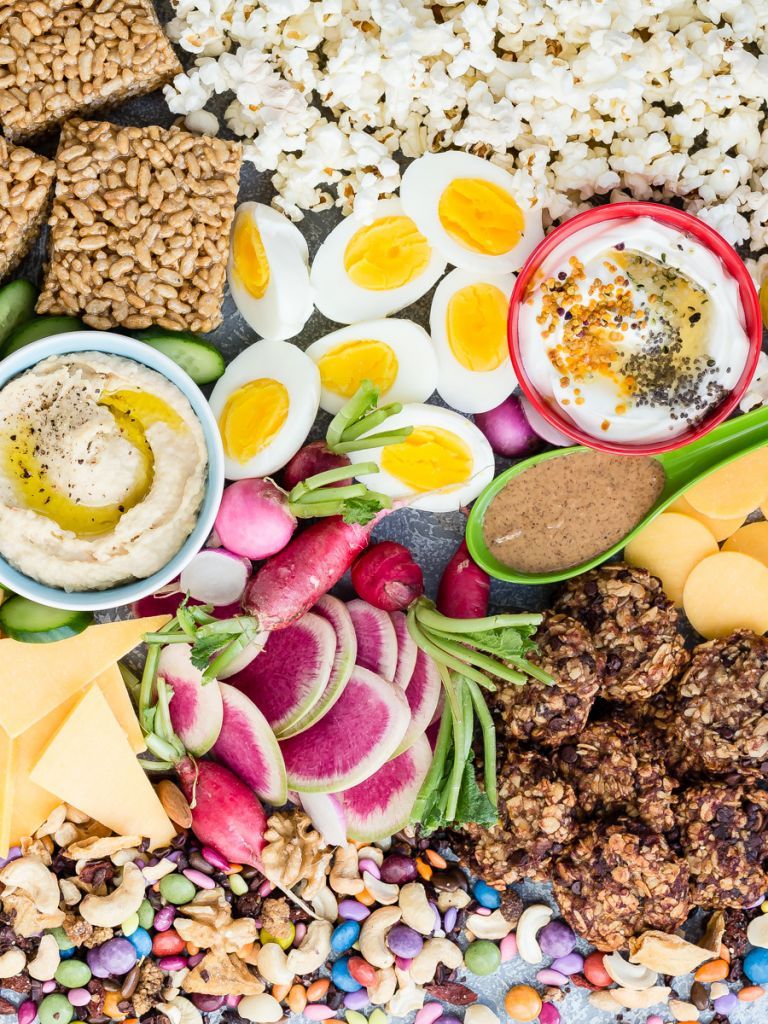
When to teach a child to eat healthy
It is important to teach your child to eat healthy from an early age. This will help shape your eating habits. A study was conducted in which nutritionists observed the eating behavior of one and a half thousand children from birth to the age of six. It turned out that children who were given little fruits and vegetables in the first year of life refused to eat them at 6 years old. The best age for teaching a child to proper nutrition is from 6 months.
By the way, the baby gets acquainted with many tastes even before his birth. While in the mother's abdomen, he swallows amniotic fluid. The taste of this liquid depends on what a woman eats during pregnancy.
After birth, the baby is breastfed and the taste of milk also depends on the mother's diet. This may be why breastfed babies transition to complementary foods much more easily than formula-fed babies.
It has been proven that the child's perception of new foods is highly dependent on whether they were present in the mother's diet during pregnancy and lactation.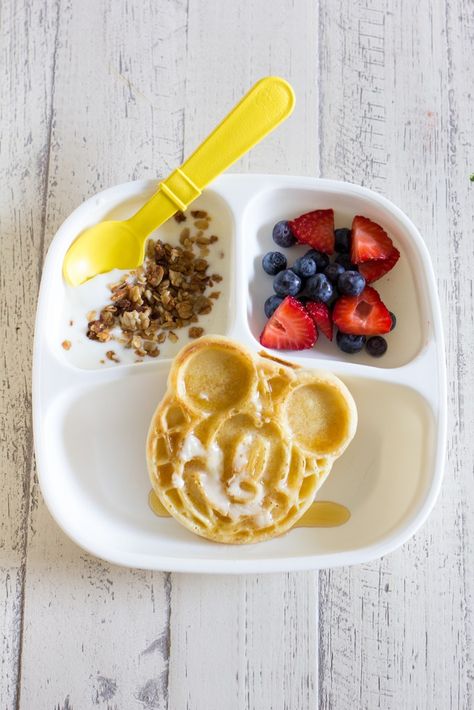 Therefore, a woman needs to be extremely careful about her diet at this time. It should be hypoallergenic, balanced and rational.
Therefore, a woman needs to be extremely careful about her diet at this time. It should be hypoallergenic, balanced and rational.
Some food preferences are noticeable in a child in the first months of his life. For example, he may enjoy eating salty and sweet foods, while refusing sour or bitter foods. In part, this is a protective function of the body, which, just in case, tries to avoid bitter foods, as they may contain toxic substances. However, not all bitter foods are unhealthy.
Healthy diet for children
The formation of healthy eating habits in children begins with the right diet. Most of all, the body of children and adolescents needs protein. It is a building material for a growing organism, and also compensates for energy losses. The younger the child, the more protein he needs. The most valuable and useful protein product for babies is mother's milk. Also in the children's diet should be vegetable proteins, which are found in legumes and grain products. Many legumes in terms of protein content can be compared with products such as meat, eggs, cottage cheese, fish.
Many legumes in terms of protein content can be compared with products such as meat, eggs, cottage cheese, fish.
In addition, the child's body needs essential amino acids that are not produced by the body and must be supplied with food. Amino acids play a huge role in the metabolic processes occurring in the body, and perform many other functions.
The diet must contain fats. These are more concentrated sources of energy than carbohydrates. In addition, the composition of fats includes vitamins A and E, important for the child's body, as well as phospholipids, PUFAs. For children, the best sources of fats are milk, butter, eggs. But the abuse of fats is highly discouraged, as this leads to metabolic disorders, digestive disorders, decreased appetite, and the development of obesity. In addition, excess fat leads to a violation of the absorption of proteins.
Young children need less carbohydrates than fats and proteins. An excess of carbohydrates (especially sugar) impairs the development and growth of children, reduces immunity, and increases the likelihood of developing caries.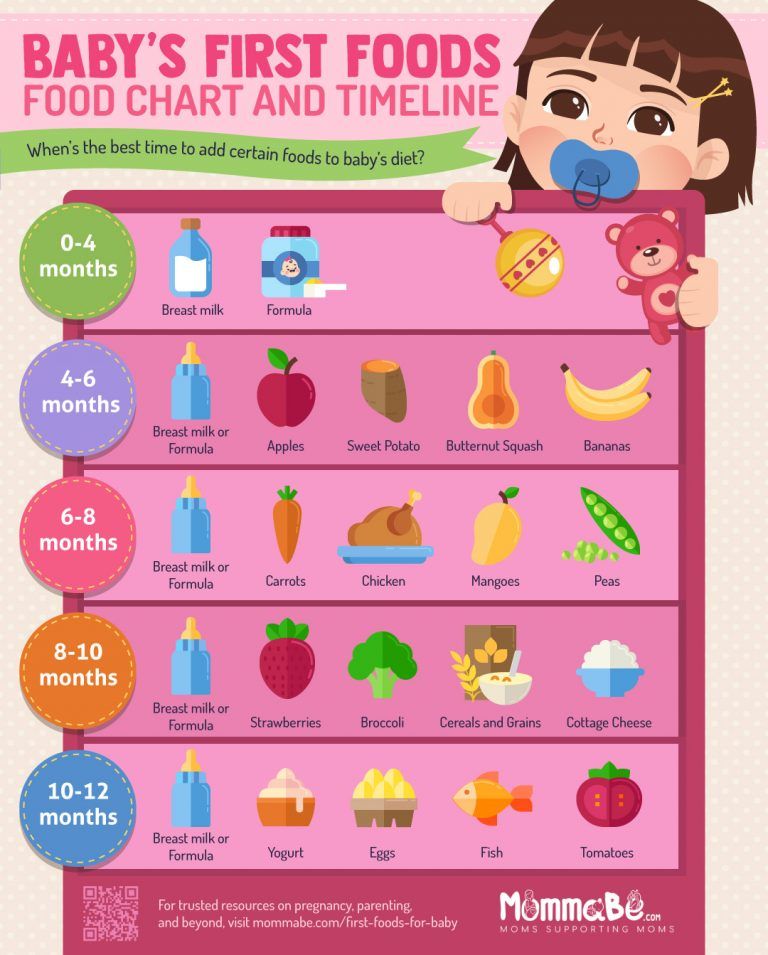 Useful sources of carbohydrates are fruits, vegetables, fresh juices, berries.
Useful sources of carbohydrates are fruits, vegetables, fresh juices, berries.
The children's body is also in dire need of vitamins (especially A and D). With a lack of vitamin D, rickets develops, hypovitaminosis A leads to disruption of the endocrine system. The most important minerals are calcium, iron and iodine.
The key to health for children is to limit the consumption of sweets. Cookies, jam, marshmallows, sweets can be given, but in small quantities and not every day.
Basic Rules
Here is a brief guide for parents on the rules of healthy eating for children:
1. The best example for children is their parents. Therefore, deciding to instill in your child the habits of proper nutrition, start with yourself.
2. Don't let your child snack on the go. The process of eating should take place at the kitchen table, without a phone, TV or tablet. It is necessary that the child was completely focused on eating, the only way to ensure the normal absorption of food.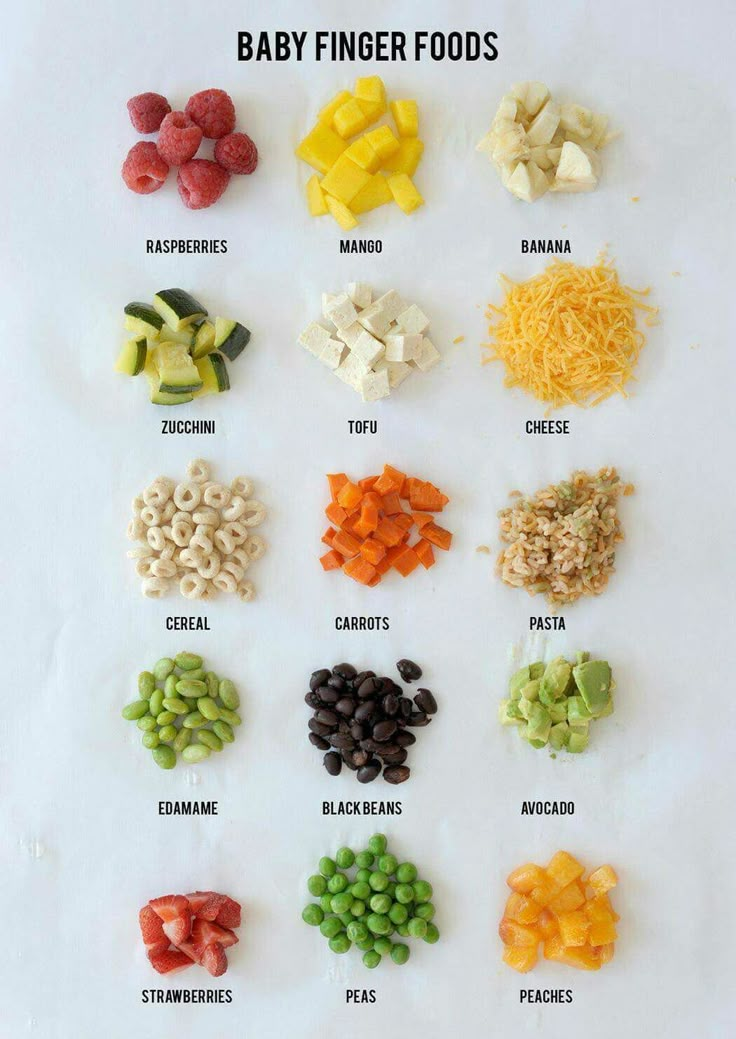
3. When compiling a menu for every day, consider not only the benefits of the products, but also the tastes of the child, as well as the individual characteristics of his body (allergies, the presence of chronic diseases, and so on).
4. Set a clear diet. The baby should eat at certain hours. There should be at least four meals a day.
5. Buy only fresh and high-quality products in stores. Pay attention to the expiration date and composition.
Remember that by teaching your baby to eat right, you are laying the foundation for his future health.
Possible problems
If a child constantly eats improperly, abuses fast food and other junk food, then the following health problems may develop over time:
- lagging behind peers in development and growth;
- obesity;
- lack of iodine, iron, vitamins and other nutrients in the body;
- gastritis;
- deterioration in general well-being, lethargy, weakness, lethargy.

Some teenage girls start to go on a strict diet to fit the ideals imposed by the fashion world. This negatively affects their health, leads to disruption of the cycle, which in the future may cause the development of infertility.
Boys have other problems. Some of them, in an effort to find a beautiful muscular body, begin to get involved in hormonal drugs, and also eat improperly, which can also lead to health problems over time.
Thus, proper nutrition is of decisive importance for children, starting from birth. And the task of parents is to provide them with fresh, high-quality products and make the right diet. This will help you avoid many health problems in the future.
Is it necessary to force children to eat
Quite often, children refuse to eat healthy food, citing the fact that they do not like it. Should they be forced to do it against their will? Of course not. But it is quite possible and even necessary to convince the child to eat calmly and reasonably.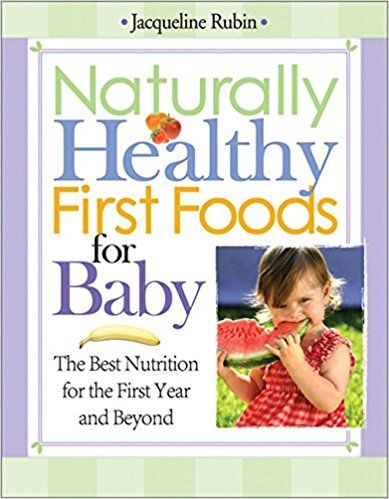
Remember how our mothers and grandmothers told many of us in an ultimatum form that until we had eaten all the food on the plate, they would not let us out from the table? And how did you feel about it? Surely, such a statement did not add motivation.
Many mothers take the fact that the child does not eat the food prepared by them as a personal insult. They believe that the child neglects care and does not appreciate the time spent on him. In fact, this position is selfish. Up takes a sense of resentment for the fact that the children rejected their care and love.
But this is absolutely not true. The child still loves them very much, and the reasons for the lack of appetite usually lie in a completely different plane. You just need to confidentially and calmly discuss the situation and understand what's going on.
Scientists have found that there is a link between forcing a child to eat and eating disorders in adulthood. In Western countries, a child is often forced to eat healthy food, motivated by the fact that it is fashionable, healthy, tasty, expensive. And, for example, in some Third World countries, a mother will be ashamed if her child is thin, since in this case the neighbors will consider that the family is poor.
And, for example, in some Third World countries, a mother will be ashamed if her child is thin, since in this case the neighbors will consider that the family is poor.
In general, motivation can be very different. Unfortunately, the total control of parents regarding nutrition often leads to negative consequences in the adult life of the child. The same applies to the ban on fast food, chips and other junk food. The forbidden fruit is always sweet, and the child begins to perceive such food as an inaccessible pleasure, which further increases the desire to eat it.
And vice versa, forcing the baby to eat wholesome food against his will, parents achieve the exact opposite effect. The child simply ceases to perceive this product as food, which will inevitably have a negative impact on his eating habits in the future.
Article sources:
- Nutrition of young children. Netrebenko O.K. Pediatrics. Journal them. G. N. Speransky, 2007.








